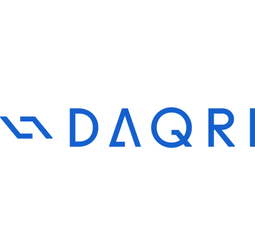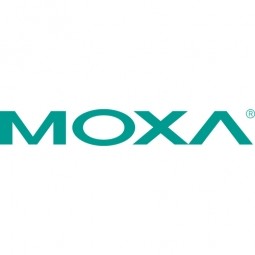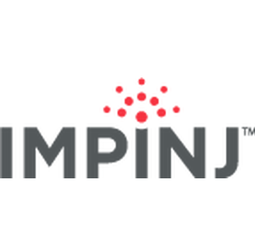Case Studies.
Add Case Study
Our Case Study database tracks 22,657 case studies in the global enterprise technology ecosystem.
Filters allow you to explore case studies quickly and efficiently.
Download Excel
Filters
-
(6,653)
- (2,601)
- (2,127)
- (945)
- View all
-
(5,642)
- (2,469)
- (1,692)
- (826)
- View all
-
(5,571)
- (2,178)
- (1,766)
- (643)
- View all
-
(5,247)
- (2,179)
- (1,715)
- (1,321)
- View all
-
(2,881)
- (1,448)
- (574)
- (376)
- View all
- View all 15 Technologies
- (1,985)
- (1,985)
- (1,915)
- (1,679)
- (1,629)
- View all 42 Industries
- (8,728)
- (4,742)
- (3,618)
- (3,233)
- (2,947)
- View all 13 Functional Areas
- (3,304)
- (2,787)
- (2,603)
- (2,006)
- (1,630)
- View all 129 Use Cases
- (13,581)
- (5,296)
- (4,272)
- (3,520)
- (2,856)
- View all 9 Services
- (504)
- (432)
- (416)
- (382)
- (301)
- View all 1083 Suppliers
Selected Filters

|
Refinery Saves Over $700,000 with Smart Wireless
One of the largest petroleum refineries in the world is equipped to refine various types of crude oil and manufacture various grades of fuel from motor gasoline to Aviation Turbine Fuel. Due to wear and tear, eight hydrogen valves in each refinery were leaking, and each cost $1800 per ton of hydrogen vented. The plant also had leakage on nearly 30 flare control hydrocarbon valves. The refinery wanted a continuous, online monitoring system that could catch leaks early, minimize hydrogen and hydrocarbon production losses, and improve safety for maintenance.
|
|
|

|
IoT based milk procurement solution- SmartMoo smartAMCU
The customer wanted to effectively monitor all their milk procurement centers placed in remote villages, to automate the centers for capturing the milk data in near real time and to enable direct farmer payments.
|
|
|

|
Airbus Soars with Wearable Technology
Building an Airbus aircraft involves complex manufacturing processes consisting of thousands of moving parts. Speed and accuracy are critical to business and competitive advantage. Improvements in both would have high impact on Airbus’ bottom line. Airbus wanted to help operators reduce the complexity of assembling cabin seats and decrease the time required to complete this task.
|
|
|

|
Plastic Spoons Case study: Injection Moulding
In order to meet customer expectations by supplying a wide variety of packaging units, from 36 to 1000 spoons per package, a new production and packaging line needed to be built. DeSter wanted to achieve higher production capacity, lower cycle time and a high degree of operator friendliness with this new production line.
|
|
|

|
BACnet enabled Wireless Temperature Monitoring System
Client offered a Temperature Monitoring System which consists of Wireless Transmitters and Application Software. Third party BACnet Application such as a Building Automation System needs access to vital parameter such as temperature, humidity, CO2, etc., measured by wireless sensor devices. Client needed a solution to allow data exchange from its Temperature Monitoring System with BMS.
|
|
|

|
Battery manufacturer Industrial Digital Twin
For optimum control of product quality, Banner relies on a high production depth. Its 560 production employees produce nearly all the components in¬-house that they need to make finished batteries on Banner’s six assembly lines. This includes the plastic parts for the battery cases as well as the paste-filled lead oxide grids. Their production involves two to five¬ days rest in maturing chambers to create optimum current absorption and storage capacity. Banner’s ongoing success was accompanied by a continuous, organic growth of the production facilities, adding or extending hall after hall until the complex filled the site that had seemed ever so spacious when the company moved here from a smaller place in 1959. These developments led to a heterogeneous production environment. “This confronts us with significant challenges, particularly concerning intra¬logistics issues, such as scheduling for the maturing chambers,” says Franz Dorninger, technical director at Banner. “We contemplated various ways to overcome this problem, including relocating to new premises.”
|
|
|

|
IoT System for Tunnel Construction
The Zenitaka Corporation ('Zenitaka') has two major business areas: its architectural business focuses on structures such as government buildings, office buildings, and commercial facilities, while its civil engineering business is targeted at structures such as tunnels, bridges and dams. Within these areas, there presented two issues that have always persisted in regard to the construction of mountain tunnels. These issues are 'improving safety" and "reducing energy consumption". Mountain tunnels construction requires a massive amount of electricity. This is because there are many kinds of electrical equipment being used day and night, including construction machinery, construction lighting, and ventilating fan. Despite this, the amount of power consumption is generally not tightly managed. In many cases, the exact amount of power consumption is only ascertained when the bill from the power company becomes available. Sometimes, corporations install demand-monitoring equipment to help curb the maximum power demanded. However, even in these cases, the devices only allow the total volume of power consumption to be ascertained, or they may issue warnings to prevent the contracted volume of power from being exceeded. In order to tackle the issue of reducing power consumption, it was first necessary to obtain an accurate breakdown of how much power was being used in each particular area. In other words, we needed to be able to visualize the amount of power being consumed. Safety, was also not being managed very rigorously. Even now, tunnel construction sites often use a 'name label' system for managing entry into the work site. Specifically, red labels with white reverse sides that bear the workers' names on both sides are displayed at the tunnel work site entrance. The workers themselves then flip the name label to the appropriate side when entering or exiting from the work site to indicate whether or not they are working inside the tunnel at any given time. If a worker forgets to flip his or her name label when entering or exiting from the tunnel, management cannot be performed effectively. In order to tackle the challenges mentioned above, Zenitaka decided to build a system that could improve the safety of tunnel construction as well as reduce the amount of power consumed. In other words, this new system would facilitate a clear picture of which workers were working in each location at the mountain tunnel construction site, as well as which processes were being carried out at those respective locations at any given time. The system would maintain the safety of all workers while also carefully controlling the electrical equipment to reduce unnecessary power consumption. Having decided on the concept, our next concern was whether there existed any kind of robust hardware that would not break down at the construction work site, that could move freely in response to changes in the working environment, and that could accurately detect workers and vehicles using radio frequency identification (RFID). Given that this system would involve many components that were new to Zenitaka, we decided to enlist the cooperation of E.I.Sol Co., Ltd. ('E.I.Sol') as our joint development partner, as they had provided us with a highly practical proposal.
|
|
|

|
KSP Steel Decentralized Control Room
While on-site in Pavlodar, Kazakhstan, the DAQRI team of Business Development and Solutions Architecture personnel worked closely with KSP Steel’s production leadership to understand the steel production process, operational challenges, and worker pain points.
|
|
|

|
Improving Asset Health Information
Unexpected downtime costs industries billions of dollars each year, and the challenges of aging assets combined with many experienced professionals at or near retirement age have companies looking at the promises of IoT technology for answers.
|
|
|

|
Data Gathering Solution for Joy Global
Joy Global's existing business processes required customers to work through an unstable legacy system to collect mass volumes of data. With inadequate processes and tools, field level analytics were not sufficient to properly inform business decisions.
|
|
|

|
Robot Saves Money and Time for US Custom Molding Company
Injection Technology (Itech) is a custom molder for a variety of clients that require precision plastic parts for such products as electric meter covers, dental appliance cases and spools. With 95 employees operating 23 molding machines in a 30,000 square foot plant, Itech wanted to reduce man hours and increase efficiency.
|
|
|

|
Garmin delivers real-time data to customers using IoT
Garmin operates on a global scale and offers a vast array of products across a number of industries, including aviation, marine, outdoor, fitness and automotive. Garmin is looking for a solution that can help them better manage all their connected devices.
|
|
|

|
Airport SCADA Systems Improve Service Levels
Modern airports are one of the busiest environments on Earth and rely on process automation equipment to ensure service operators achieve their KPIs. Increasingly airport SCADA systems are being used to control all aspects of the operation and associated facilities. This is because unplanned system downtime can cost dearly, both in terms of reduced revenues and the associated loss of customer satisfaction due to inevitable travel inconvenience and disruption.
|
|
|

|
Aircraft Predictive Maintenance and Workflow Optimization
First, aircraft manufacturer have trouble monitoring the health of aircraft systems with health prognostics and deliver predictive maintenance insights. Second, aircraft manufacturer wants a solution that can provide an in-context advisory and align job assignments to match technician experience and expertise.
|
|
|

|
Bluescope Steel on Path to Digitally Transform Operations and IT
Increasing competition and fluctuations in the construction market prompted BlueScope Steel to look toward digital transformation of its four businesses, including modern core applications and IT infrastructure. BlueScope needed to modernize its infrastructure and adopt new technologies to improve operations and supply chain efficiency while maintaining and updating an aging application portfolio.
|
|
|

|
Remote Monitoring and Control for a Windmill Generator
As concerns over global warming continue to grow, green technologies are becoming increasingly popular. Wind turbine companies provide an excellent alternative to burning fossil fuels by harnessing kinetic energy from the wind and converting it into electricity. A typical wind farm may include over 80 wind turbines so efficient and reliable networks to manage and control these installations are imperative. Each wind turbine includes a generator and a variety of serial components such as a water cooler, high voltage transformer, ultrasonic wind sensors, yaw gear, blade bearing, pitch cylinder, and hub controller. All of these components are controlled by a PLC and communicate with the ground host. Due to the total integration of these devices into an Ethernet network, one of our customers in the wind turbine industry needed a serial-to-Ethernet solution that can operate reliably for years without interruption.
|
|
|

|
Leading Tools Manufacturer Transforms Operations with IoT
Stanley Black & Decker required transparency of real-time overall equipment effectiveness and line productivity to reduce production line change over time.The goal was to to improve production to schedule, reduce actual labor costs and understanding the effects of shift changes and resource shifts from line to line.
|
|
|

|
Transformation for IoT Business Model in Connected Industrial Vehicles
CNH Industrial wanted to put IoT-enabled viechles onto the market. Whether monitoring a single machine or integrating an entire fleet, operators are able to track the status, speed, and movement of machines and their performance and also receive alerts on issues that may require service by a qualified technician to improve uptime and overall effectiveness of the vehicle.
|
|
|

|
HEINEKEN Uses the Cloud to Reach 10.5 Million Consumers
For 2012 campaign, the Bond promotion, it planned to launch the campaign at the same time everywhere on the planet. That created unprecedented challenges for HEINEKEN—nowhere more so than in its technology operation. The primary digital content for the campaign was a 100-megabyte movie that had to play flawlessly for millions of viewers worldwide. After all, Bond never fails. No one was going to tolerate a technology failure that might bruise his brand.Previously, HEINEKEN had supported digital media at its outsourced datacenter. But that datacenter lacked the computing resources HEINEKEN needed, and building them—especially to support peak traffic that would total millions of simultaneous hits—would have been both time-consuming and expensive. Nor would it have provided the geographic reach that HEINEKEN needed to minimize latency worldwide.
|
|
|

|
Integral Plant Maintenance
Mercedes-Benz and his partner GAZ chose Siemens to be its maintenance partner at a new engine plant in Yaroslavl, Russia. The new plant offers a capacity to manufacture diesel engines for the Russian market, for locally produced Sprinter Classic. In addition to engines for the local market, the Yaroslavl plant will also produce spare parts. Mercedes-Benz Russia and his partner needed a service partner in order to ensure the operation of these lines in a maintenance partnership arrangement. The challenges included coordinating the entire maintenance management operation, in particular inspections, corrective and predictive maintenance activities, and the optimizing spare parts management. Siemens developed a customized maintenance solution that includes all electronic and mechanical maintenance activities (Integral Plant Maintenance).
|
|
|

|
Honeywell - Tata Chemicals Improves Data Accessibility with OneWireless
Tata was facing data accessibility challenges in the cement plant control room tapping signals from remote process control areas and other distant locations, including the gas scrubber. Tata needed a wireless solution to extend its control network securely to remote locations that would also provide seamless communication with existing control applications.
|
|
|
_14.jpg)
|
A Cloud-based Machine Performance Assistant
Printing International is building pad printing machinery to print on all kinds of plastics, glass, ceramics, porcelain, on caps and closures, medical devices and pharmaceuticals. 4 Key Project Requirements: • Transparency on machine performance • Worldwide service network • Remote support, contractual availability • IT security
|
|
|

|
NB-IoT connected smart meters to improve gas metering in Shenzhen
Shenzhen Gas has a large fleet of existing gas meters, which are installed in a variety of hard to reach locations, such as indoors and underground, meaning that existing communications networks have struggled to maintain connectivity with all meters. The meter success rate is low, data transmissions are so far unstable and power consumption is too high. Against this background, Shenzhen Gas, China Telecom, Huawei, and Goldcard have jointly trialed NB-IoT gas meters to try and solve some of the challenges that the industry faces with today’s smart gas meters.
|
|
|

|
IoT Based Milk Production Application
The dairy farm as a result of being completely manual in nature had become completely unproductive and unprofitable. Technology intervention was the need of the hour
|
|
|

|
Hospital Inventory Management
The hospital supply chain team is responsible for ensuring that the right medical supplies are readily available to clinicians when and where needed, and to do so in the most efficient manner possible. However, many of the systems and processes in use at the cancer center for supply chain management were not best suited to support these goals. Barcoding technology, a commonly used method for inventory management of medical supplies, is labor intensive, time consuming, does not provide real-time visibility into inventory levels and can be prone to error. Consequently, the lack of accurate and real-time visibility into inventory levels across multiple supply rooms in multiple hospital facilities creates additional inefficiency in the system causing over-ordering, hoarding, and wasted supplies. Other sources of waste and cost were also identified as candidates for improvement. Existing systems and processes did not provide adequate security for high-cost inventory within the hospital, which was another driver of cost. A lack of visibility into expiration dates for supplies resulted in supplies being wasted due to past expiry dates. Storage of supplies was also a key consideration given the location of the cancer center’s facilities in a dense urban setting, where space is always at a premium. In order to address the challenges outlined above, the hospital sought a solution that would provide real-time inventory information with high levels of accuracy, reduce the level of manual effort required and enable data driven decision making to ensure that the right supplies were readily available to clinicians in the right location at the right time.
|
|
|

|
Fully Automated Visual Inspection System
Tofflon has developed a fully automatic machine that uses light to inspect vials, medicine bottles, or infusion containers for glass fragments, aluminum particles, rubber grains, hairs, fibers, or other contaminants. It also detects damaged containers with cracks or inclusions (microscopic imperfections), automatically removing faulty or contaminated products. In order to cover all production processes for freeze-dried pharmaceuticals, Tofflon needed to create an open, consistent, and module-based automation concept.
|
|
|

|
Predictive Maintenance Drives Smarter Fleet Management
Fleet managers are turning to predictive analytics to stay on top of maintenance and mitigate part failures before they happen. However, managing the large amount of new data generated by vehicle sensors is challenging.
|
|
|

|
New Business Models in Maintenance
Everything that can be automated will be automated, and it is up to us, as people, to learn how to adjust to this development With the advent of the networking of processes and the Industrial Internet of Things, IT has further cemented its place in the production facilities of modern enterprises and is now set to revolutionise the way in which maintenance is approached. The Chamber of Industry and Commerce has its hands full when it comes to making sure that vocational and training concepts both accompany and keep up with these developments. Many employees are anxious, believing that the ongoing digitalisation of the world of work will result in greater job insecurity; a general misconception which regrettably continues to abound. The fact that digitalisation is set to provide both new opportunities and challenges, and that not every workplace is in danger, is often conveniently overlooked in the surrounding hype. It’s as if history is due to repeat itself every time any major industrial revolution occurs. Production workers begin to fear for their jobs and fear of change in the workplace remains high. Nevertheless, production is subject to constant change and we must all learn to adapt. Today, it is IT, in the wake of the IIoT, which stands to replace traditional rosters and blackboards. What’s more, the advent of employees directly communicating with machines via speech in order to reset them is also fast approaching. Voice-control has already gained general acceptance, but an even greater degree of trust in technology is required. If no changes are made to the way you work, the sudden advent of digitalisation may make it appear as though things are out of place or even missing. That isn’t to suggest that there was a time in which IT didn’t exist in the realm of production; such a statement wouldn’t be true, as evidenced by the fact that, in times past, maintenance staff spent an inordinate amount of time making their rounds accompanied by a programmer’s notebook, which had different editors to program components and helped to facilitate communication between human and machine. Nevertheless, the fact remains that the networking of processes continues to generate considerable uncertainty. Customised production The introduction of online marketing has resulted in a large percentage of industrial production being tailored to fit the customer. Affiliate marketing allows you to find out much more about your customers, their behaviour as consumers, and the underlying motives that drive their decision making. Thus, in certain sectors, it no longer makes sense to produce products, place them in storage units, and then wait until they are sold off. Instead, it is becoming the norm to make predictions according to customer decisions or trends. By using information gathered from CRM systems, customer feedback and digital sales statistics, it is possible to determine the colours, form, and features that a customer would desire a future product to have. It is also possible to produce products in such a way that the targeted customer immediately purchases them, thus resolving the need to store the products away until such a time as they are sold. Customised production places high demands on maintenance. Common topics that are frequently brought up in addition to classical and continual improvement processes include: - Preventive Maintenance - Corrective Maintenance - Condition-related maintenance The umbrella term ‘predictive maintenance’ is often used to encompass the topics listed above. Predictive maintenance is a strategy that is based on real-time data taken from production. It permits you to quickly recognise and respond to problems or results which were not visible in the past, but which are now, thanks to new advances in technology (e.g. condition monitoring), immediately detectable. What does the process of networking involve? When surveying a newly digitalised production hall for the first time, the first difference that one notices is that a specific IP address has been assigned to all automated devices connected to the network, which allows for data to be received and sent. These automated devices can be completely different from each other. It does not matter. What does matter (where plant or machine controllers are involved) is the PLC (programmable logic controller). A digital network topology looks as such: sensors, drives, and actuators move things around; robots weld, solder, press and pack; and HMI/SCADA systems supervise the processes. Then there are presses, drills, machine tools, milling processes, and much more. Generally, there is a different editor used to program each type of automated device type. There are very few uniform standards when it comes to software editors and thus automation engineers cannot use the same software to program a wide range of devices. Visual programming languages in DIN EN 61131-3 are regulated, however, each editor has its own special features and they are seldom compatible. Editors continue to be further developed if only for the purpose of continuously updating them to support current operating systems. Software developers are eager to offer their customers ongoing updates, the reason for which lies in the fact that customers do not have any reason to pay for software editors that have reached the end of their development. They will only pay for new developments. For maintenance staff, this trend necessitates them to undergo constant further training in order to understand and implement the latest functions and features brought out by the software developer. In that regard, it is interesting to note that, even as the number of people present in the production hall continues to decline, the number of maintenance staff continues to grow. This stands in stark contrast to the hype about the human factor becoming an obsolete element when it comes to production; on the contrary, the human factor will continue to grow in importance, especially when it comes to fixing unplanned malfunctions and errors that may occur to the complex machines and systems during production. All visions involving the future state of digital production thus have one thing in common and that is the fact that people will continue to play a vital role: the ability to understand the complex connections between numerous machines, controllers and programs, will continue to be a sure-fire guarantee of success.
|
|
|

|
IoT-based Fleet Intelligence Innovation
Speed to market is precious for DRVR, a rapidly growing start-up company. With a business model dependent on reliable mobile data, managers were spending their lives trying to negotiate data roaming deals with mobile network operators in different countries. And, even then, service quality was a constant concern.
|
|
|

|
Industrial Automation Case Study
For nearly two decades, Spectrum CNC Technologies has been revolutionizing the computer numerical controlled (CNC) machine tool industry. Its software-based machine tool communications system, MultiDNC, was the first product on the market to enable simultaneous uploads, downloads and dripfeeding of data to multiple CNC controls. Over the years, Spectrum has continued the revolution with innovative products, services and unbeatable support for the best overall value available in the industry. Two years ago, Spectrum began development on a wirelss solution for its Multi-DNC system, something its customers had been asking for. Spectrum knew that a wireless industrial automation solution could bring many new and compelling benefits, including simplified and less costly installation, increased reliability and enhanced flexibility for machine movement. Spectrum CNC also knew that a wireless solution for Multi-DNC would position the company for strong growth. However, company executives did not want to rush to market with an unreliable system. Having worked with Lantronix in the past, Spectrum was confident that Lantronix could recommend the best product to embed wireless networking capabilities into its Multi-DNC system.
|
|




